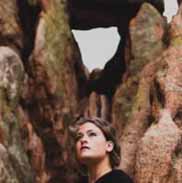Bio Exam 2 Plant Structure
Unlock all answers in this set
Unlock answersquestion
Nonvascular
answer
Not containing vessels to transport water and nutrients, such as mosses, liverworts, and hornworts.
question
Moss
answer
Primitive non-vascular plant that reproduces through spores, distributes water through diffusion.
question
Vascular
answer
Containing vessels to transport water and nutrients.
question
Ferns
answer
Primitive vascular plant that reproduce with spores.
question
Gymnosperms
answer
seed plant that bears its seeds directly on the surfaces of cones, not enclosed by fruit.
question
Angiosperms
answer
A flowering plant which forms seeds inside a protective chamber called an ovary, includes all flowering trees and plants.
question
Monocots
answer
Plants in which one cotelydon forms, have parallel veins, vascular tissue is in random bundles, the flower parts occur in multiples of three, have fibrous roots.
question
Dicots/Eudicots
answer
Plants in which two cotyledon forms, have branching veins, vascular tissue is an an orderly ring, flower parts occur in multiple of four or five, taproots
question
Flowers
answer
seed-bearing structures of angiosperms
question
Fruits
answer
A structure that develops from flower organs, encloses seeds, and fosters seed dispersal in the environment
question
Seeds
answer
Embryonic plant with its own supply of water and nutrients encased within a protective coating.
question
Roots
answer
absorbs water and minerals from the soil and anchors the plant in place.
question
Fibrous roots
answer
Similarly sized roots all branching out from the stem. Primarily in monocots.
question
Taproots
answer
Thicker primary roots with many smaller roots branching out from them, primarily in eudicots.
question
Root hairs
answer
These increase the surface area of the root that is in contact with the soil and do all of the absorption.
question
Stems
answer
provides structural support for the plant, positions leaves so that they can be exposed to sunlight, conducts food and water around the plant.
question
Shoots
answer
The aerial portion of a plant body, consisting of stems, leaves, and flowers
question
cuticle
answer
Shiny, waxy layer that protects all land plants from drying.
question
stomata
answer
the small openings on the undersides of most leaves through which oxygen and carbon dioxide can move
question
leaf hairs
answer
hairlike structures that cover the epidermis of certain plants and protect the plants from excessive evaporation
question
dermal tissue (vascular plants)
answer
Covers and protects the surface of the plant
question
Epidermal tissue
answer
single layer of tightly packed, very thing cells that produces a cuticle and makes up the dermal tissue.
question
Guard cells
answer
Specialized cells in the epidermis that help regulate the gases coming into and out of leaves.
question
cork cells
answer
This replaces the epidermis as the plant continues to grow and thicken, cells that contain a thick fatty substance that makes the tissue impermeable to water and resistant to fire and decay (dead)
question
Xylem tissue
answer
Moves water and dissolved minerals from the roots up the stem to the leaves where these substances are used in photosynthesis.
question
cohesion tension mechanism
answer
transportation provides the tension (pull). evaporation of water from surfaces of plants.
question
phloem
answer
vascular tissue responsible for the transport of nutrients and the carbohydrates produced by photosynthesis
question
sap
answer
watery fluid in vascular system with water or sugar in it
question
Pressure flow mechanism
answer
the method by which phloem sap is transported through a plant from a sugar source where sugars are produced to a sugar sink where sugars are used
question
Parenchyma (ground tissue)
answer
Majority of plant tissue, soft flexible tissue found in leaves, flowers, stems, fruits. Workhorses of the plant, stores energy
question
Collenchyma (ground tissue)
answer
Elongated, stringy cells with thickened cell walls, gives flexibility (ex- celery strings)
question
Sclerenchyma (ground tissue)
answer
Cells that are not living when they are mature, make up wood, cell walls contain lignin, very strong.
question
Lignin
answer
One of the chief chemical components in wood
question
Nitrogen fixation
answer
the process of changing free nitrogen gas into a usable form
question
Mycorrhizae
answer
network of hyphae and plant roots that helps plants absorb water and minerals from soil
question
Root meristem
answer
A group of undifferentiated plant cells at the tip of a plant root that can differentiate into mature root tissue.
question
shoot meristem
answer
A group of undifferentiated plant cells at the tip of a plant stem that can differentiate into mature shoot tissues.
question
cotelydon
answer
Structure in the plant embryo, becomes the first leaf of the plant. \"seed leaves\" help to transfer energy, suppy energy for germination
question
Apical meristem
answer
Embryonic plant tissue in the tips of roots and in the buds of shoots that supplies cells for the plant to grow in length
question
lateral meristem
answer
A layer of cells called cambium that cause a stem or root to become thicker rather than longer when they divide.
question
node
answer
A point along the stem of a plant at which leaves are attached.
question
endosperm
answer
Nutritive tissue in the seed that can fuel the seeds initial growth.
question
leaves
answer
The primary site of photosynthesis.



